QSDA2022 Qlik Sense Data Architect Certification Exam–2022 Free Practice Exam Questions (2025 Updated)
Prepare effectively for your Qlik QSDA2022 Qlik Sense Data Architect Certification Exam–2022 certification with our extensive collection of free, high-quality practice questions. Each question is designed to mirror the actual exam format and objectives, complete with comprehensive answers and detailed explanations. Our materials are regularly updated for 2025, ensuring you have the most current resources to build confidence and succeed on your first attempt.
The Marketing department is using some similar KPIs in different apps that need to be modified frequently according to the business needs. The KPIs are created using master items with the same expression.
Which method should the data architect use to manage the modifications in all apps?
A data architect executes the following script.

Which values does the OrderDate field contain after executing the script?
Refer to the exhibit.
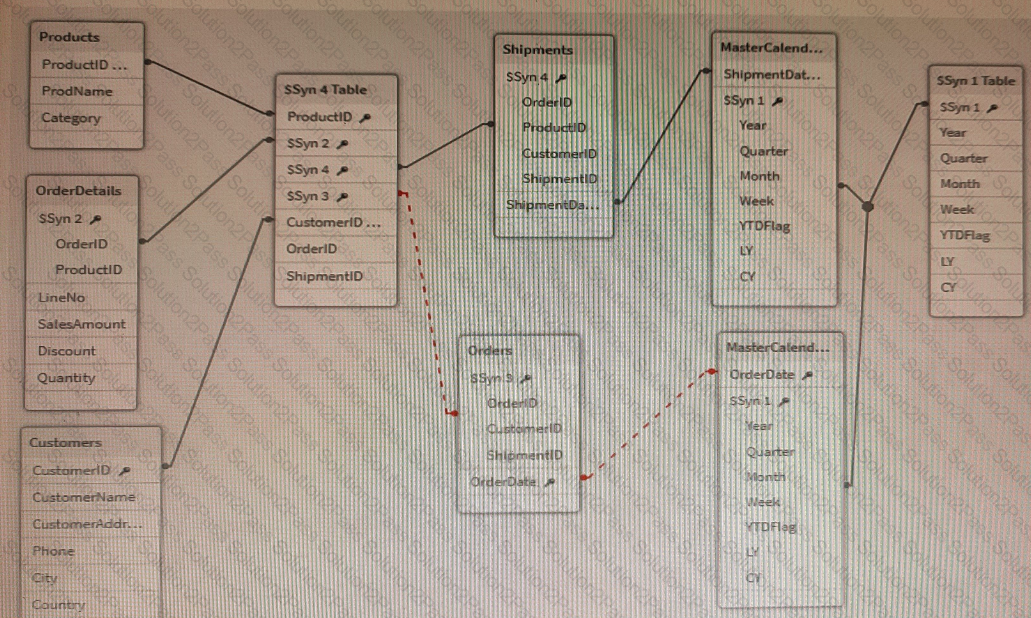
A data architect is working on a Qlik Sense app the business has created to analyze the company orders and shipments. To understand the table structure, the business has given the following summary:
• Every order creates a unique orderlD and an order date in the Orders table
• An order can contain one or more order lines one for each product ID in the order details table
• Products in the order are shipped (shipment date) as soon as tliey are ready and can be shipped separately
• The dates need to be analyzed separately by Year Month, and Quarter
The data architect realizes the data model has issues that must be fixed.
Which steps should the data architect perform?
Refer to the exhibit.
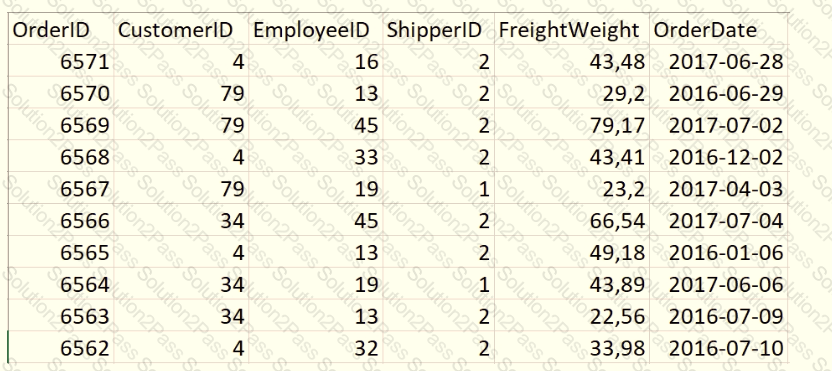
The data architect needs to create a KPI that displays the average amount of orders per customer. This aggregated field should be added to the existing orders table Which script should the data architect use?
A)
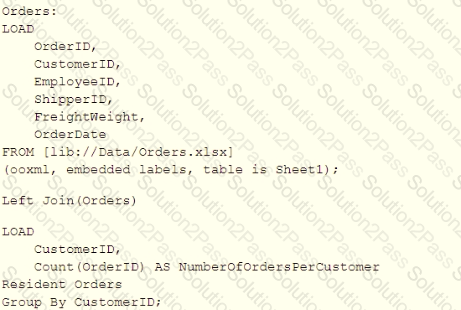
B)
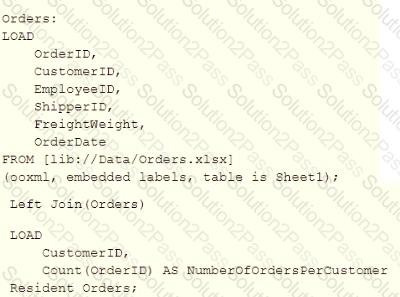
C)
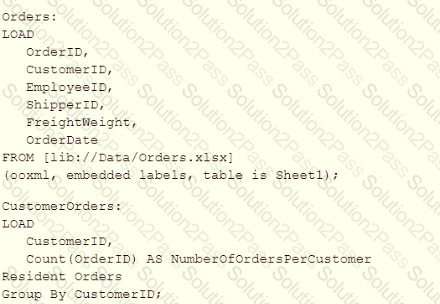
D)
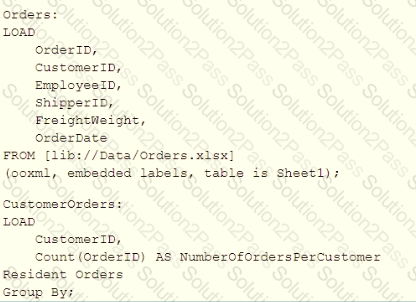
A company decides to migrate all apps from QlikView to Qlik Sense. After converting an apps: there are several unconverted objects What should the data architect do?
Refer to the exhibit.
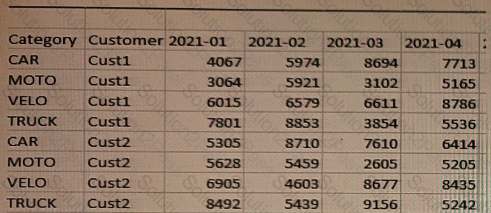
A customer needs to load forecast data from an Excel file.
Which preceding load statement should the data architect use to load the data?
A)

B)

C)

D)

Refer to the exhibit.
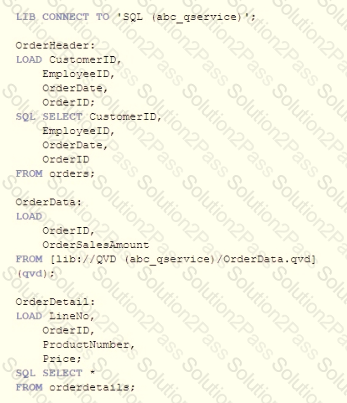
An existing app on Qlik Sense Enterprise is duplicated and transferred to a data architect to add some additional data When trying to manually reload the original script, the data architect receives an error
What should be done to make sure the script runs correctly?
A data architect executes the following script:
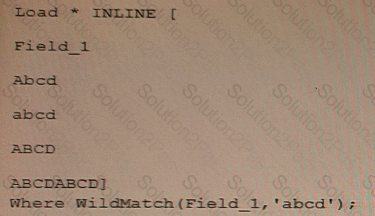
What will Field_1 contain after this script is executed?
A data architect needs to develop multiple apps for various departments. More departments are requesting apps over time The company uses specific requirements for the number interpretation variables (e.g., ThousandSep, DecimalSep) found at the beginning of a LOAD script.
The data architect wants to reduce duplicate scripts but does not want to copy and paste the number interpretation variables each time new app is created. The data architect prefers to use the least amount of script in Qlik Sense.
How should the data architect meet these requirements?
A data architect builds a data model for a large user group. Some sheets will be published, and the app will allow users to create their own visualizations and analyze data. Some fields must NOT appear in any field list.
How should a data architect meet these requirements?
A data architect needs to upload data from ten different sources, but only if there are any changes after the last reload When data is updated, a new file is placed into a folder mapped to E A439926003 The data connection points to this folder.
The data architect plans a script which will:
1. Verify that the file exists
2. If the file exists, upload it Otherwise, skip to the next piece of code
The script will repeat this subroutine for each source. When the script ends, all uploaded files will be removed with a batch procedure.
Which option should the data architect use to meet these requirements?
Refer to the exhibits.
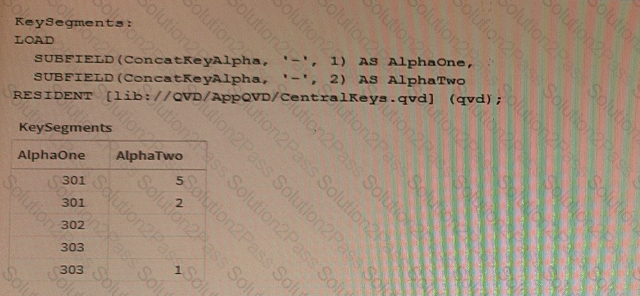
While debugging an app, a developer loads data from an application layer QVD file.
In the process of separating a concatenated key into two parts, some split results are missing data
What should the data architect do?
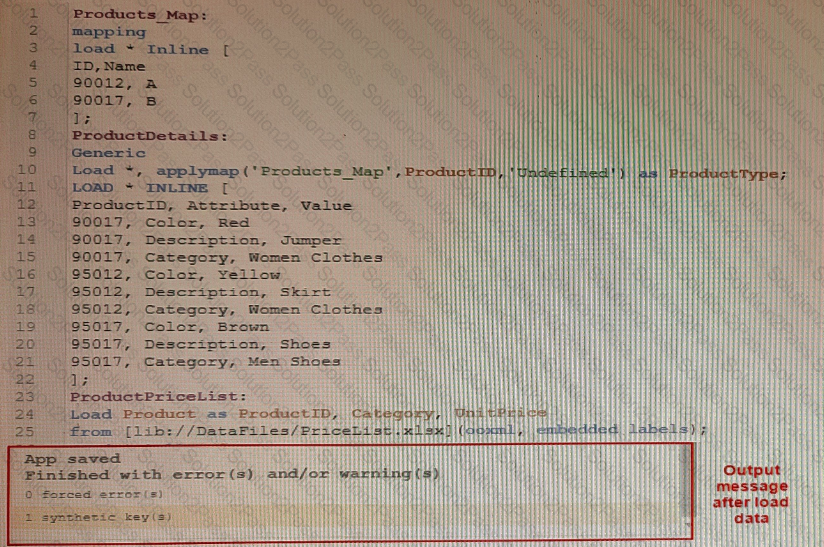
A data architect is creating an app using three tables. After executing the script, a warning displays
Which two steps should the data architect do to resolve this warning? (Select two.)
Refer to the exhibit.
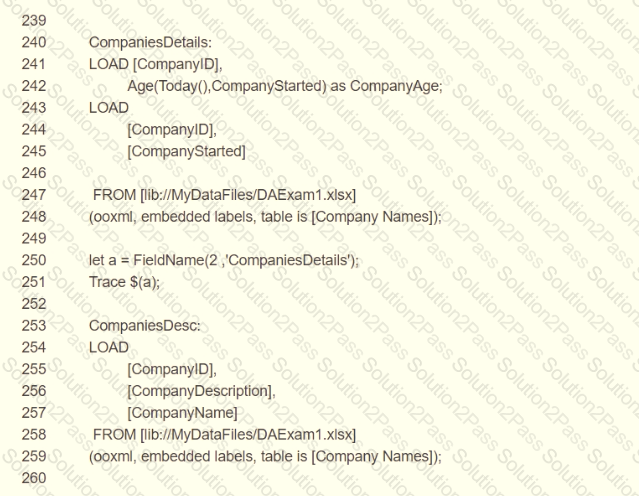
A business analyst reports that the 'CompanyAge' field does NOT display for users The data architect examines the LOAD script and wants to place the breakpoint in the script to check the field name.
Which line number should the data architect use?
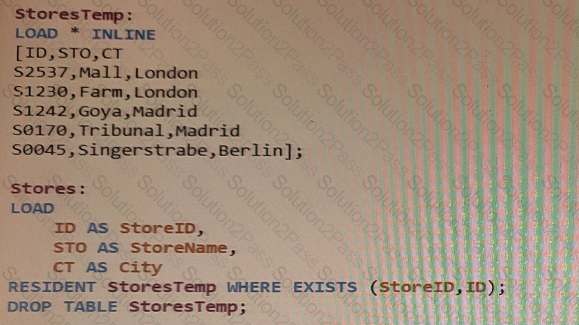
Refer to the exhibit
A data architect develops an app for Coffee4all, a coffee company with stores located throughout Europe
The script runs successfully, but the Stores table does not have any values.
What should the data architect do?
Refer to the exhibit.
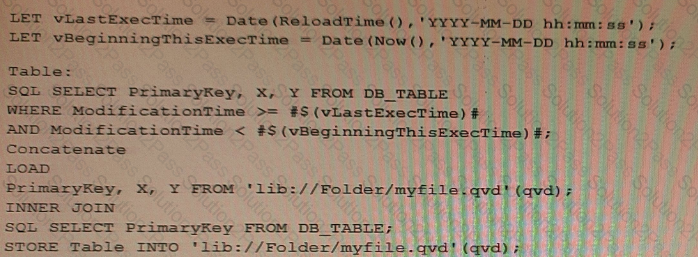
Which changes on the database will the script capture?
Refer to the exhibit.

The data architect needs to build a model that contains Sales and Budget data for each customer. Some customers have Sales without a Budget, and other customers have a Budget with no Sales
During loading, the data architect resolves a synthetic key by creating the composite key
For validation, the data architect creates a table containing Customer, Month. Sales, and Budget columns.
What does the data architect see when selecting a month?
A data architect of an organization that has implemented Qlik Sense on Windows needs to load large amounts of data from a database that is continuously updated
New records are added, and existing records get updated and deleted. Each record has a LastModified field.
All existing records are exported into a QVD file. The data architect wants to load the records into Qlik Sense efficiently.
Which steps should the data architect take to meet these requirements?
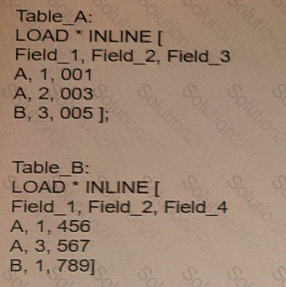
Refer io the exhibit.
A data architect needs to modify the script to ONLY load rows from Table_B when Field_1 and Field_2 are the same as in Table_A. (For example, only the row containing A, 1, 456 should be loaded from Table_B.)
Which script should the data architect use?
A)
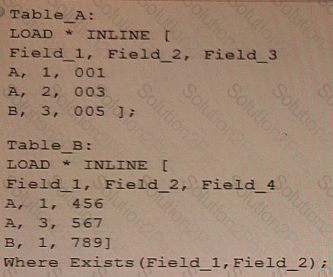
B)
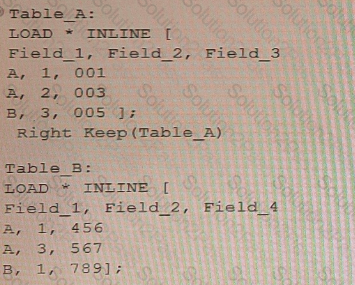
C)
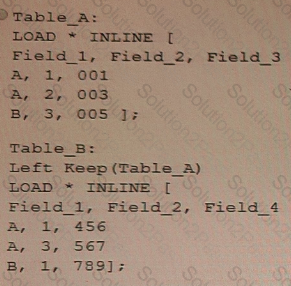
D)
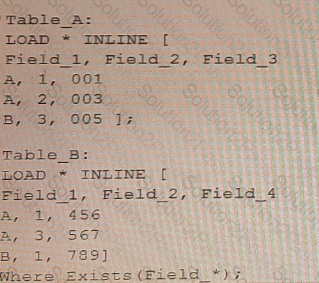
A data architect needs to revise an existing app.
The number of data rows has grown rapidly recently. While the app is in production, users are becoming increasingly unhappy about the response times when they make selections
Which two methods should be used to improve performance? (Select two.)
